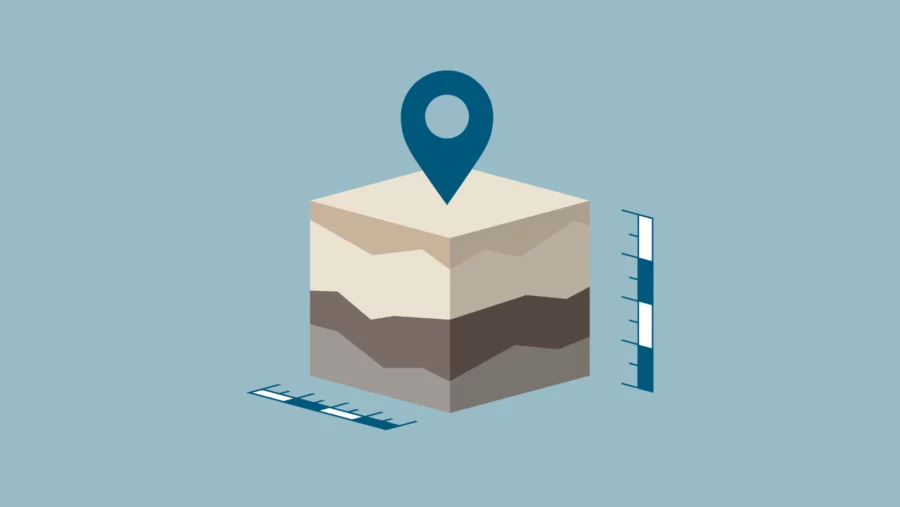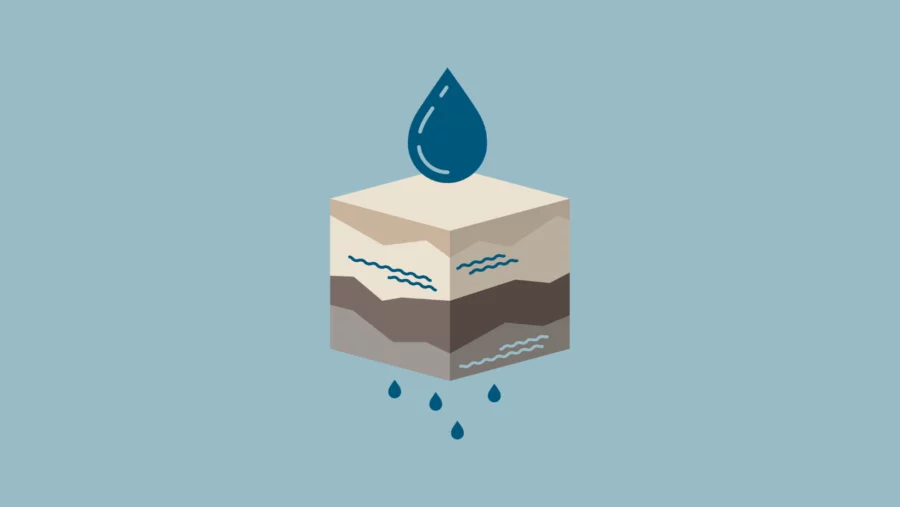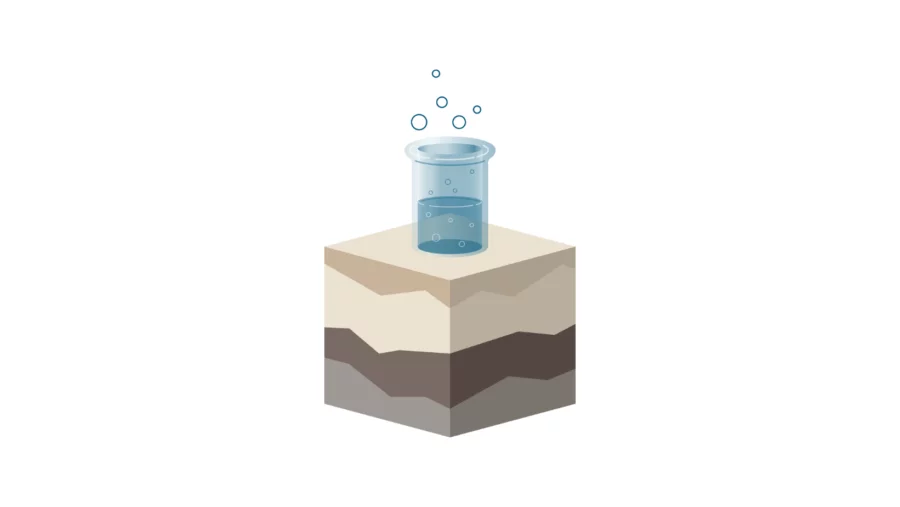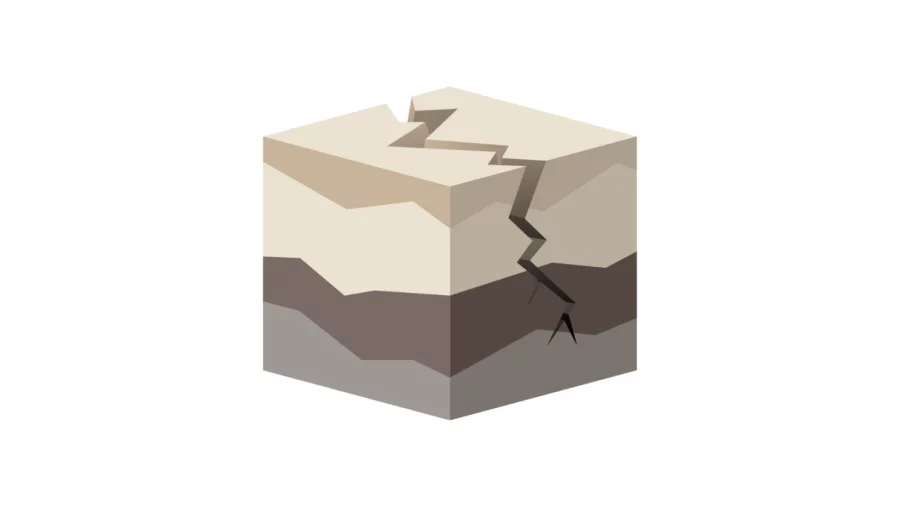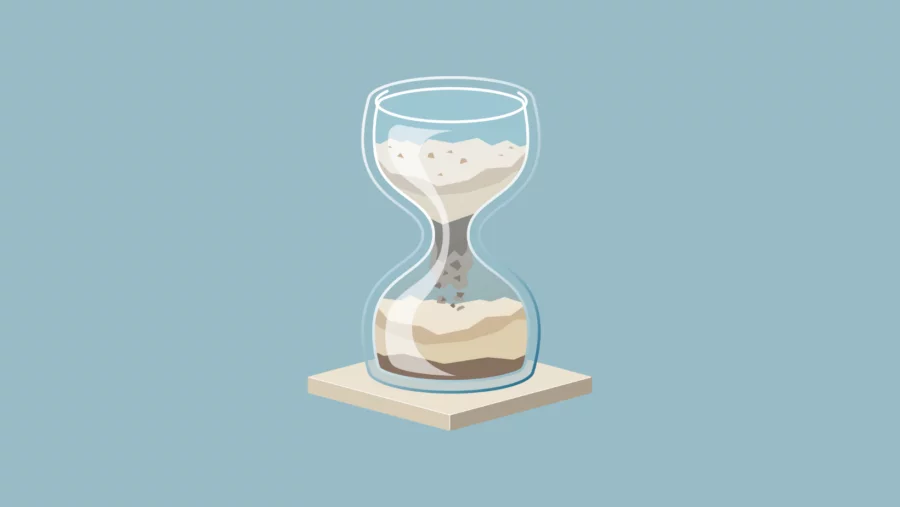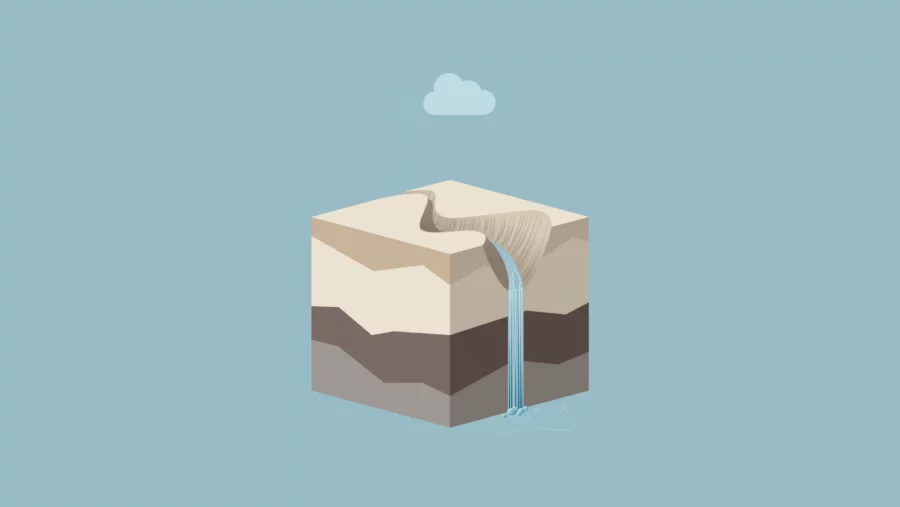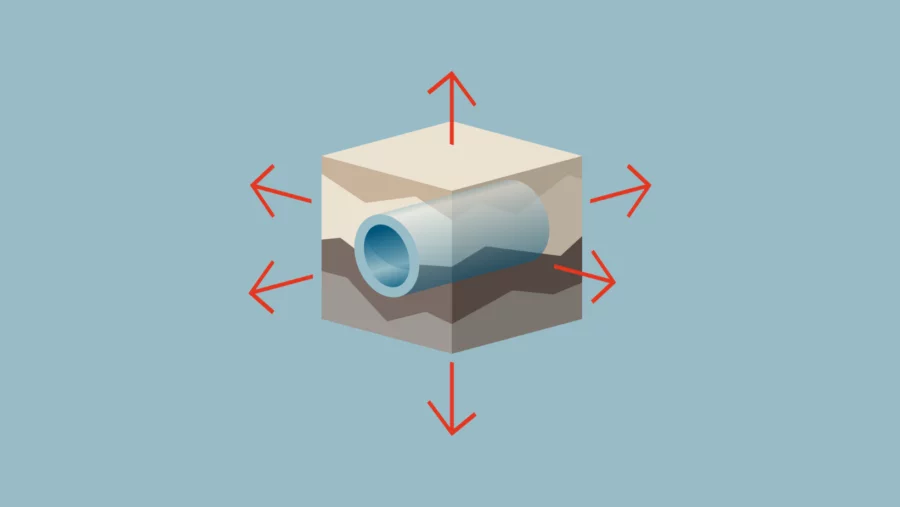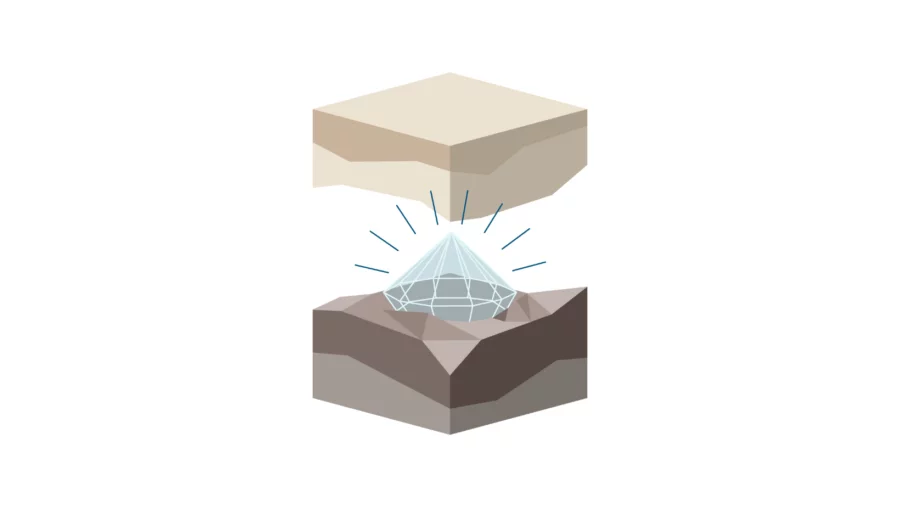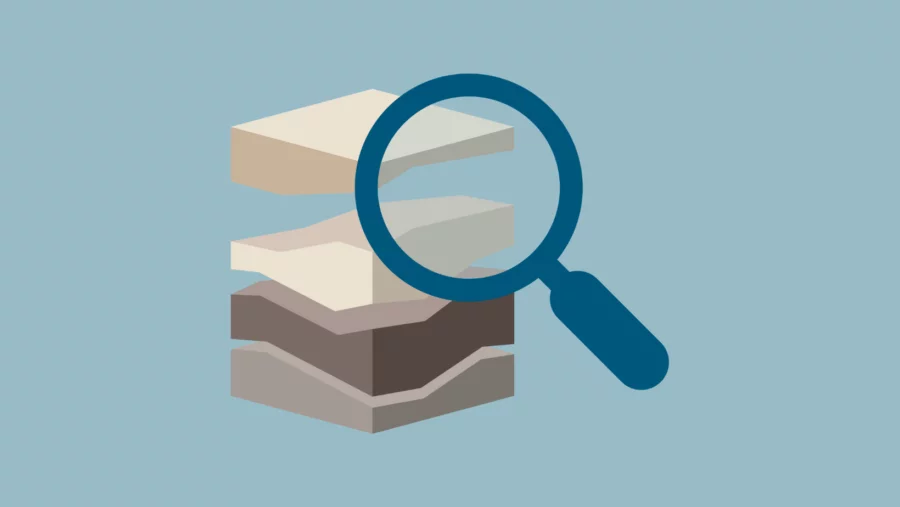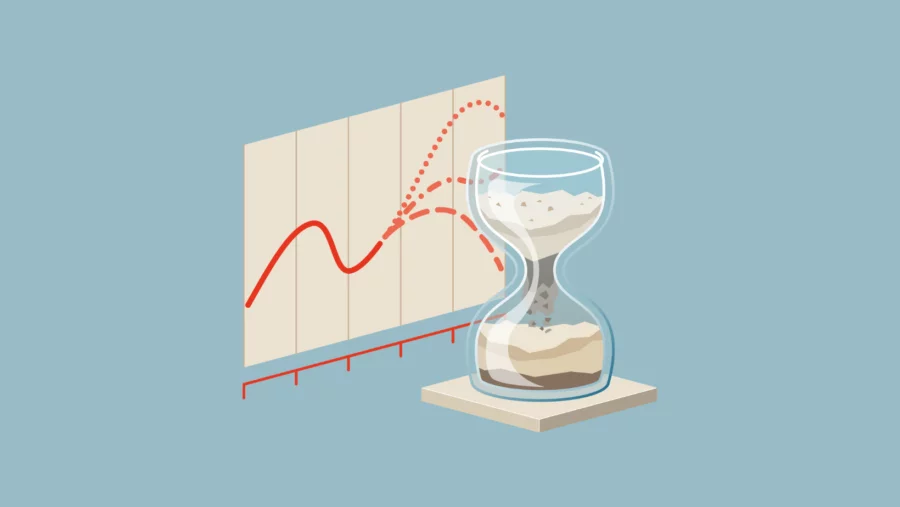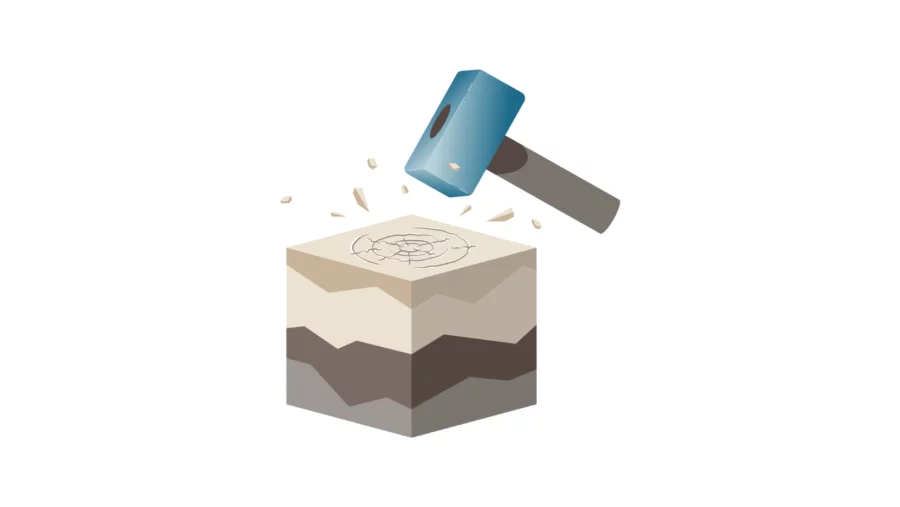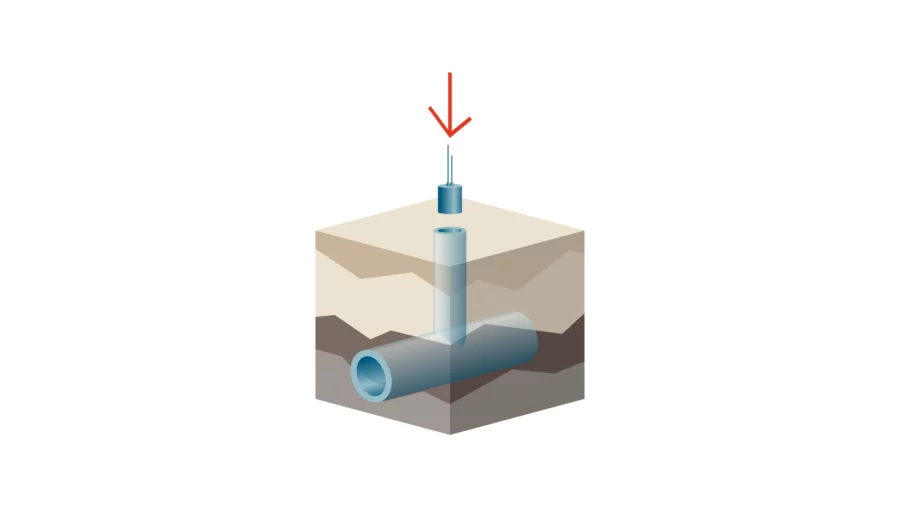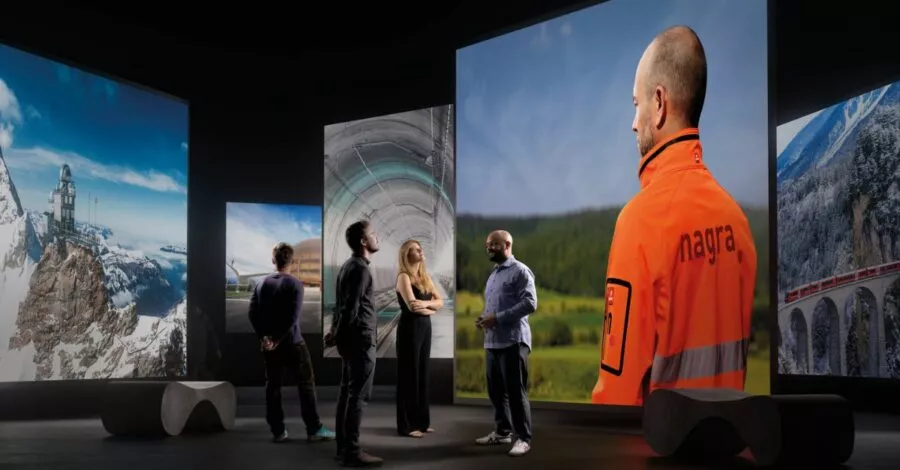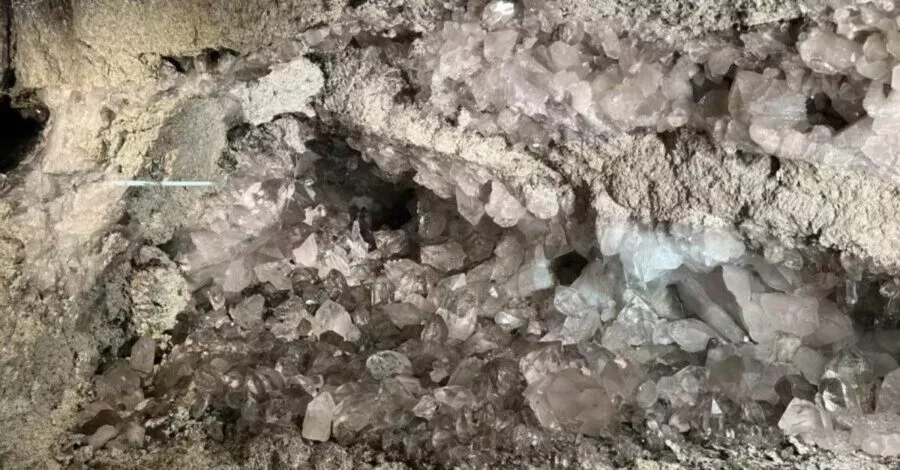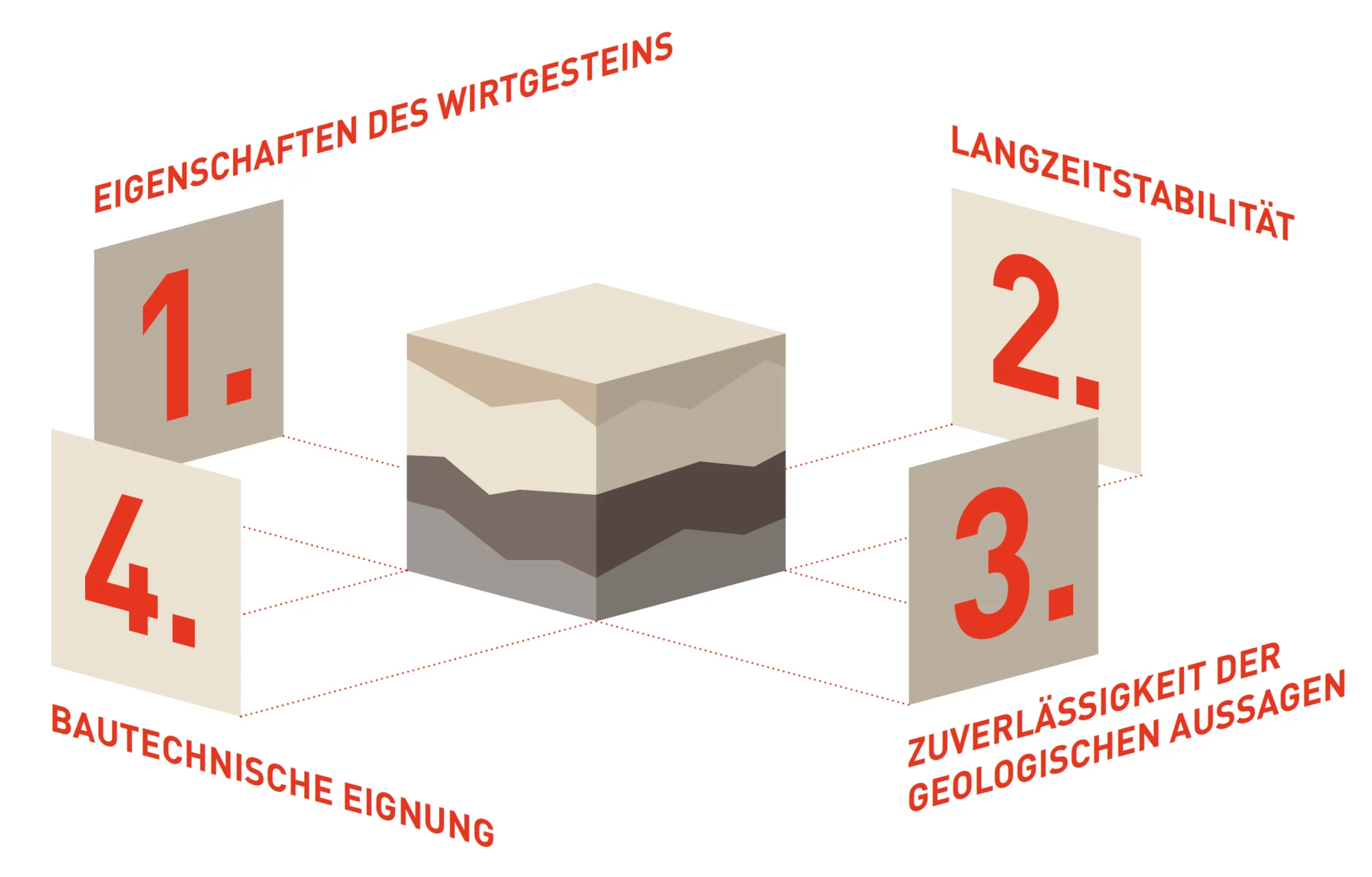
Nördlich Lägern is the safest site for a deep geological repository. And: the decision in favour of Nördlich Lägern was unequivocal. These were Nagra’s two key statements when it announced its siting proposal in September 2022 – but how did Nagra come to this conclusion?
Seven criteria point in favour of Nördlich Lägern
In its report on the siting proposal, Nagra summarised the criteria under the terms quality, stability and flexibility. Strictly speaking, however, Nagra’s decision is based on 13 criteria relating to safety and engineering feasibility. These criteria were defined in the Sectoral Plan for Deep Geological Repositories. Here, we outline the 13 criteria in detail and explain their relevance.
“Seven of the thirteen criteria speak in favour of the Nördlich Lägern siting region,” says Nagra CEO and geologist, Matthias Braun. “For the remaining six criteria, the three siting regions are equally suitable. For this reason, we are in a position to say: this is an unequivocal decision.”
These are the 13 criteria
The 13 criteria are divided into four groups:
– properties of the host rock and the containment-providing rock zone
– long-term stability
– reliability of geological findings
– engineering suitability
The first three criteria groups reveal differences between the siting regions. For the criteria group “engineering suitability”, however, there are no relevant differences.
Criteria with light-blue background = Nördlich Lägern is more suitable
Criteria Group 1: Properties of the host rock and the containment-providing rock zone
The criteria “spatial extent” and “hydraulic barrier effect” speak in favour of Nördlich Lägern.
This region has the largest spatial extent of quietly bedded and undisturbed clay-rich rock formations. They are homogeneous and thick enough to ensure that the geological barrier is of good quality.
The hydraulic barrier effect describes the tightness of the rock and how well it can contain water as well as all other substances. The Opalinus Clay and the surrounding rocks in Nördlich Lägern were found to contain the oldest porewater. This shows that Nördlich Lägern has the best containment capacity.
There are no differences between the regions for the other two criteria in this group: the geochemical conditions are similarly good throughout. The same applies to the so-called release pathways. The clay-rich rocks are very homogeneous in all three regions, and the Opalinus Clay can seal potential fissures on its own.
Matthias Braun on Criteria Group 1:
“In Northern Switzerland, the Opalinus Clay has the ideal depth, quality and extent and is also comparatively undisturbed. However, we see advantages for Nördlich Lägern with regard to the first two criteria. For this reason, we are in a position to say: the geological barrier in Nördlich Lägern has the best containment capacity for radioactive waste.”
Criteria Group 2: Long-term stability
Stability of the site and rock properties
All three siting regions are geologically stable over very long time periods. Even in the highly unlikely scenario that strong tectonic forces should occur, the Opalinus Clay would only deform rather than fracture. Nördlich Lägern offers the greatest long-term stability.
Repository-induced effects
These refer, for example, to heat generated by the waste or to the production of gas in the repository. Gas is generated by corrosion processes, which increases the pressure in the repository. However, in Nördlich Lägern, the counterpressure from above is greater because the repository will be constructed at great depth.
The criteria stability of the site and rock properties, erosion and repository-induced effects speak in favour of Nördlich Lägern.
Criterion “Stability of the site and rock properties”:
Even in the unlikely scenario that strong tectonic forces were to occur in the future, the Opalinus Clay would only deform rather than fracture. Should fissures form, the Opalinus Clay would be able to seal itself. Nördlich Lägern has the advantage that tectonic stress is lowest here.
In Nördlich Lägern, the repository can be constructed at great depth. This is an advantage with regard to erosion. Glaciers and rivers cut into the earth over very long periods of time. By constructing the repository at greater depth, erosion processes will reach it later. In addition, the Opalinus Clay is covered by robust, erosion-resistant rock layers. These layers erode more slowly, thereby providing the repository with additional protection.
The criterion repository-induced effects relates to processes in the repository that can potentially impact the surrounding rock layers, for example, as a result of heat generated by the waste. Corrosion processes are responsible for the production of gas, which, in turn, increases pressure. In Nördlich Lägern, this is counteracted by higher natural pressure from above because the repository will be constructed at greater depth.
Conflicts of use are not decisive in the site selection process as none of the three siting regions has raw material deposits whose use would be relevantly restricted.
Matthias Braun on Criteria Group 2:
“Nördlich Lägern has the greatest safety reserves. The great depth at which the repository is to be constructed provides excellent protection against erosion. This depth is also advantageous with regard to gas production. The deeper you go, the greater the natural pressure. This counteracts the gas pressure.”
Criteria Group 3: Reliability of the geological findings
The criteria explorability of spatial conditions and predictability of long-term evolution speak in favour of Nördlich Lägern.
The region is the most suitable in terms of the explorability of spatial conditions because the tectonic structure is the least complex. As a result, statements about the geology are more reliable.
The predictability of long-term evolution is also considered to be most reliable in Nördlich Lägern. The oldest porewater was found here, indicating very low water circulation.
The siting regions are equally suitable with regard to the characterisability of the rocks: in all regions, the required data are available in the required quality.
Matthias Braun on Criteria Group 3:
“The quality of our data is very good. We have an accurate picture of the underground of Northern Switzerland. This allows us to make reliable predictions.”
Criteria Group 4: Engineering suitability
There are hardly any differences in this criteria group. Neither the rock-mechanical properties and conditions nor the underground development and drainage pose any problems.
Matthias Braun on Criteria Group 4:
“New measurements of rock strength show that there are no relevant differences between the siting regions that would affect the construction, operation, monitoring or closure of the repository.”
Our conclusion: an unequivocal decision
The advantages of Nördlich Lägern outweigh the suitability of the other siting regions. Seven out of thirteen criteria speak in favour of the repository being constructed in Haberstal in the community of Stadel. For the remaining six criteria, the three siting regions are equally suitable. Nagra CEO, Matthias Braun: “This is an unequivocal decision: Nördlich Lägern is the most suitable site and has the largest safety reserves.”
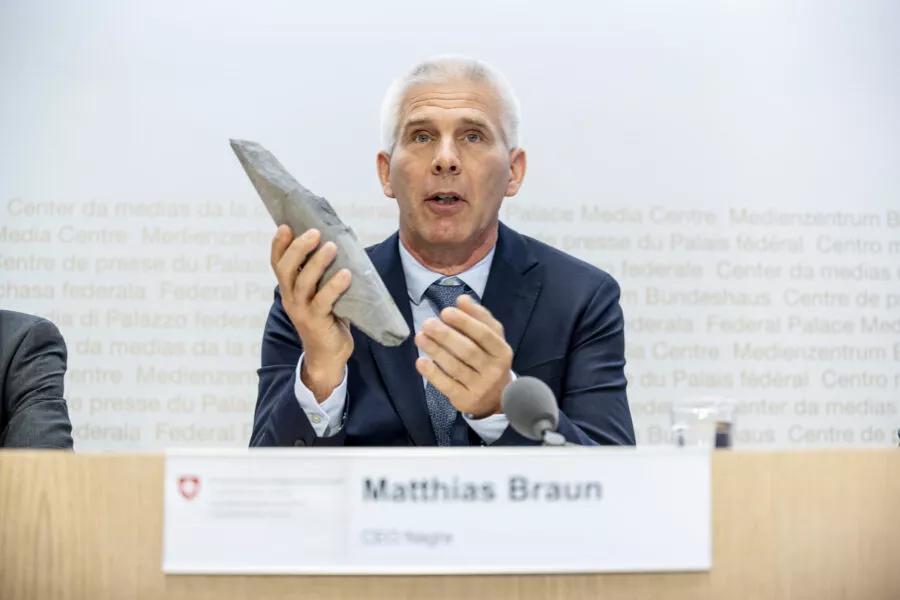
Similar articles
What does Switzerland think about the deep geological repository?
Switzerland is confident that it can realise the project of the century of deep geological disposal. A recent, representative survey shows that acceptance is high across the whole of Switzerland and in the affected region.
